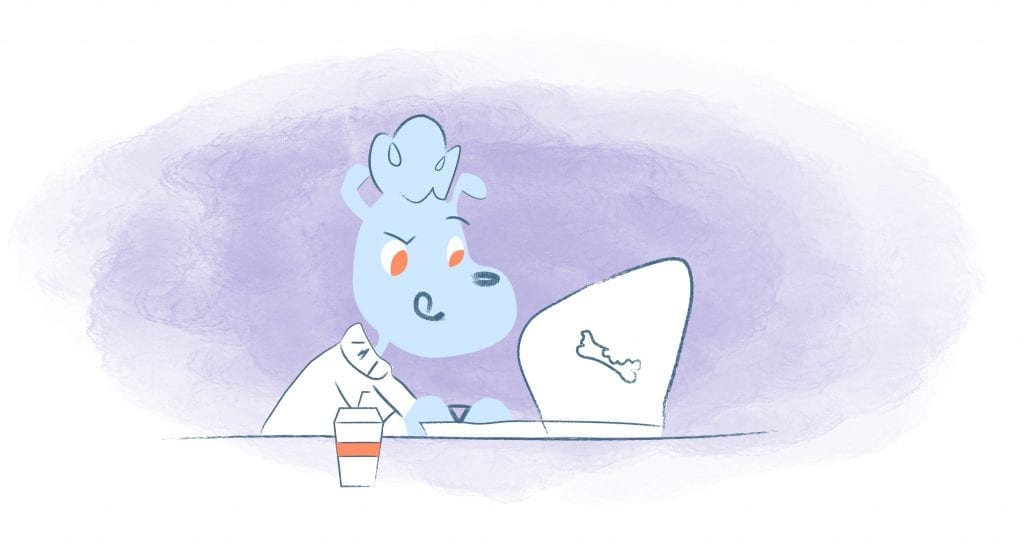

Have you ever had a friend, neighbor, or co-worker who broke an arm or leg? You probably wouldn’t hesitate to help them. Maybe it could be holding a door open or carrying a heavy object for them. But, on the other hand, if you knew this person was struggling with a mental health issue such as anxiety, depression, or bipolar disorder, would you be as willing to help?
Although everyone says to reach out if you’re struggling with mental health, finding the right person to confide in can be a challenge. Stigma, shame, and prejudice often prevent people from seeking help when they are struggling. What’s more, you are reluctant to help if you’re not that knowledgeable about mental health.
Let’s say you work with many people who are like that. Their skepticism or disbelief of a particular experience makes them unsure how they can help. Or worse, they think the person is somehow ”wrong” and ”abnormal.” The result? A culture that discourages people with mental health issues from speaking out, seeking help, and actively concealing their issues.
But why should this be a concern? After all, only a small percentage of people face mental health hurdles. Well, that’s not exactly true.
Almost every one of us has experienced a mental health challenge at some point; whether it’s a colleague, a loved one, a friend, a client, or even oneself. Mental illness will affect 52.9% of U.S. adults in 2020. This corresponds to one in five U.S. adults. A further 14.2 million adults in the U.S. experienced serious mental illness, representing 1 in 20 adults.
However, you can shift the world to be safer and more supportive of people dealing with mental illness as a mental health ally.
Take care of yourself.
Taking care of yourself comes first and foremost. For this reason, flight attendants instruct you to secure your oxygen mask first. Your life, and the life of the person you wish to help, could be at risk if you don’t act.
Although this might sound selfish, if your current situation is unstable, you cannot help others.
Start by doing one thing taking care of yourself for 21 consecutive days. It doesn’t have to be the same action every day, but you can change it every day if you wish. Regardless, please keep track of your actions by writing them down on a calendar or using your calendar app.
Some suggestions would be;
- Getting 8 hours of sleep per night.
- Waking-up 30 minutes earlier.
- Meditating.
- Maintaining a healthy diet consisting of whole grains, lean protein, and fruits and vegetables.
- Exercising for 30-minutes.
- Journaling.
- Saying no to something you don’t want to do.
- Decluttering your home, workspace, and even your online calendar.
- Learning a new skill or engaging in an enjoyable hobby.
- Calling or texting a friend or family member.
- Writing “thank you” cards.
- Scheduling an appointment with your doctor, dentist, and mental health professional.
Educate yourself.
Being an ally means taking the time to understand and asking questions — especially when it comes to knowing things you don’t know. And, most importantly, educating yourself.
In regards to mental health, here are some things people should know:
- In general, mental illness is a broad term. Different types of mental illness affect other people in different ways.
- Even though mental illnesses can’t be seen, they are also physical illnesses. Several chronic diseases have been linked to depression, for example. Among them are diabetes, asthma, cancer, cardiovascular disease, and arthritis. Depression, anxiety, or bipolar disorder can also lead to sleep problems or engaging in unhealthy habits like smoking or overeating.
- Being diagnosed with a mental illness doesn’t mean you are weak or incapable. In other words, the same goals can be achieved more difficultly, but not impossible.
- The topic of mental illness is a subject rife with myths. So don’t assume everything you hear is accurate, and keep an open mind.
If you would like to look further into the topic of mental health and illnesses, please see the following resources:
- The National Alliance on Mental Health (NAMI)
- The National Institute of Mental Health (NIMH)
- MentalHealth.gov
In addition, several organizations provide workplace training, including the National Council for Mental Wellbeing’s Mental Health First Aid course.
Empathize and listen without judgment.
An ally’s commitment to mental health is one of the essential aspects. As an ally, you must practice listening without judgment, without rushing to give advice.
A mental illness should be valued, and you should never dismiss someone with a mental illness. After all, you can’t simply tell someone to snap out of it. Remember, it’s not just a phase or mood swing when it comes to mental health.
Make sure your language is appropriate.
As you learn more about mental health and those living with mental health issues, be cognizant of your language. The stigma associated with mental health is increased when people are called “crazy,” “emotional,” or “insane.”
For future reference, you might want to use these alternative adjectives.
In the same vein, stop using words like “depression,” “bipolar,” or “OCD” (Obsessive Compulsive Disorder) casually when discussing everyday stress. Again, these disorders can be very debilitating, and they are not mere “phases” that affected individuals can easily snap out of.
Share your story.
Mental health needs to be made more approachable for everyone by creating awareness and visibility. The power of a person’s story cannot be underestimated, no matter how powerful numbers and statistics are.
People can connect to your story and feel less alone when sharing your lived experience, whether you have a serious, chronic mental illness or suffer from daily anxiety. And this is especially true if you’re in a leadership position. As Brené Brown perfectly states, “Daring leaders work to make sure people can be themselves and feel a sense of belonging.”
Build communities.
How can people demonstrate that they are allies? WayAhead Mental Health Association NSW asked experts and people with lived experiences. And one of the responses was building a community.
- Environment. To ensure people with lived mental ill-health can participate and feel comfortable, creating a safe, welcoming environment is essential. Think about how the room layout looks, is there a space where people can be alone without being completely isolated? Take into account the temperature, the lighting, and the ambient noise as well.
- Engagement. Make sure you let people know about an upcoming event or activity and offer them the opportunity to ask questions if necessary. You can help alleviate anxiety by providing them with details about what to expect when they arrive. If you can make the activity more accessible for individuals, you can also ask them for any specific ways to make it so. Additionally, during workshops, presentations, or other activities, consider offering a combination of group and individual activities. And. Allow people to take breaks if and when they need them.
- Inclusive. Involving people from these groups at every stage of a project or activity means valuing their expertise and experiences as a resource. Coproduction and co-design are strategies that can assist you in achieving this.
Be patient, don’t press.
“Some people are an open book,” Stacey L. Nash writes for Happify. “They want to discuss what they’re feeling as soon as they feel it.”
On the other hand, others might be private or wary of sharing. “They may have trauma in their past that contributes to their mental health challenges and makes it difficult for them to trust others,” adds Nash. It may take some time for them to open up, but you should be patient and understanding if and when they are ready.
“Sometimes, when people have difficulty discussing what’s on their mind, it’s important to create a space where they feel safe,” says Merissa Goolsarran, L.C.S.W., a licensed mental health therapist in Florida. It’s important not to undervalue the importance of letting your coworker be themselves, even if they never wholly discuss their mental health issues. Even if you never allow them to share everything in their life, respecting their privacy will build trust.
Deploy a supportive mental health policy.
“Implementing and maintaining a strong policy against stigma and promoting mental health creates a supportive work environment and culture,” writes Katherine Ponte, founder of ForLikeMinds, for HBR. “Provide all employees with a clear overview of your company’s mental health benefits.” Let them know that stigmas associated with mental health will be treated similarly to other forms of discrimination, and encourage them to voice their concerns.
“Also encourage employees to confront colleagues that espouse any and all stigma, whether or not intentional, and report such conduct to supervisors,” adds Ponte. As part of your mental health policy, you can pledge to implement best practices addressing mental health concerns. “Employees should have identified available resources to report concerns and an uncomplicated complaint or feedback process that provides anonymity.”
“If you’re in management, you can create a mental health director position to develop, implement, and enforce your company’s mental health policy,” she suggests. “A workplace mental health committee comprising a diverse group of stakeholders, especially employees living with mental illness, can help shape, implement, and maintain this policy.”
Ponte also recommends office accommodations. These include “breaks to attend medical appointments, flextime, quiet workspaces, office psychiatric service dogs,” or remote work. And you could also provide access to care that includes coverage of mental health services and comprehensive leave policies.
Image credit: Ekaterina Bolovtsova; Pexels; Thank you!











Deanna Ritchie
Editor-in-Chief at Calendar. Former Editor-in-Chief and writer at Startup Grind. Freelance editor at Entrepreneur.com. Deanna loves to help build startups, and guide them to discover the business value of their online content and social media marketing.